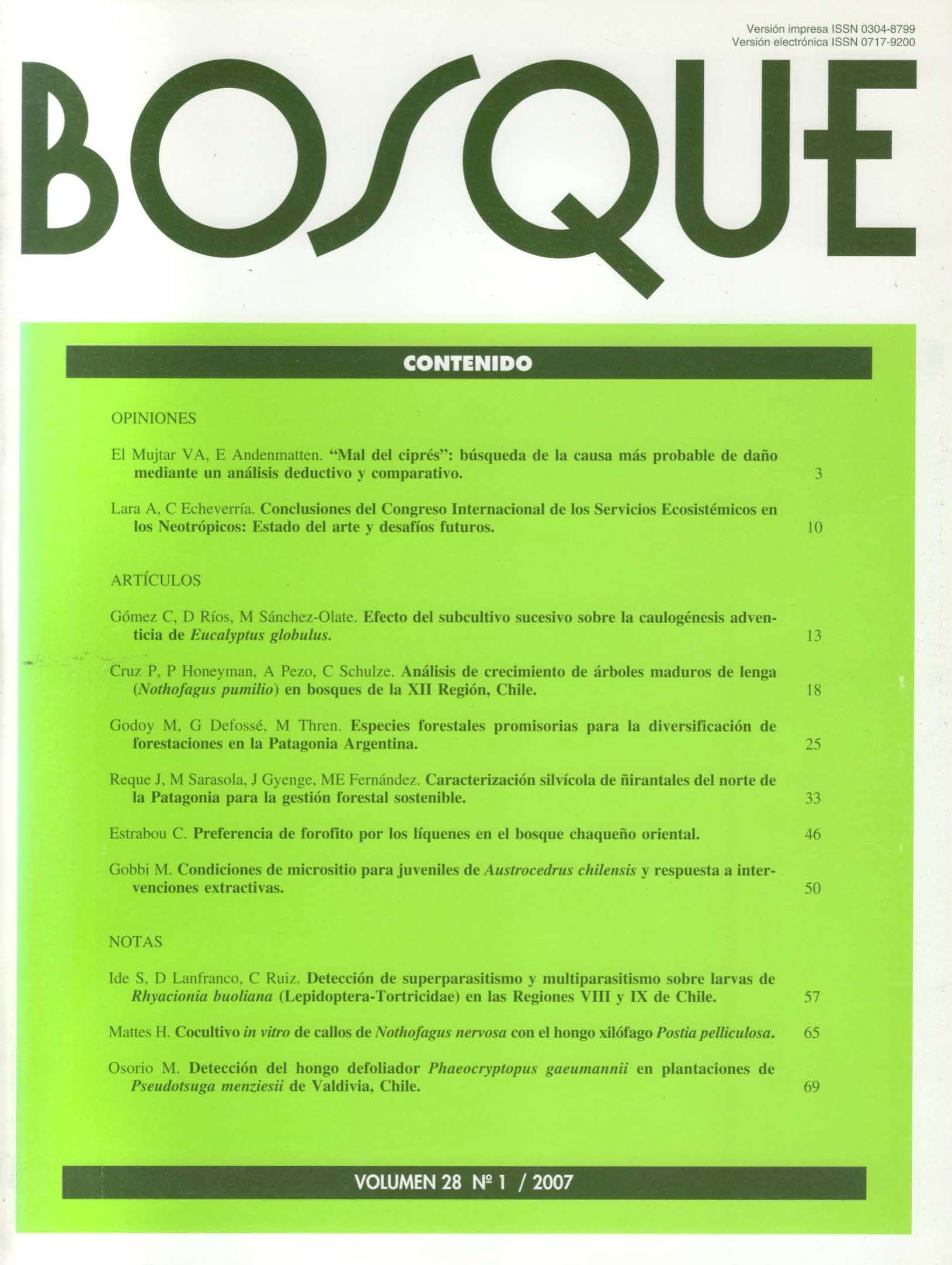Silvicultural characterization of the mixed ñire forests of northern Patagonia as a basis for sustainable forestry
Main Article Content
Abstract
In spite of their wide geographical distribution and use, there are few publications about the silviculture of the forests with Nothofagus antarctica, locally named “ñirantales”. The available publications report studies carried out in central to southern Patagonia, where “ñires” form forests of relatively tall trees. The traditional management of the ñire forests has been based in fuelwood production and silvopastoralism. Characterization of the forests of Lomatio-Nothofagetum antarcticae of the central basin of the Foyel River (Río Negro, Patagonia, Argentina) was carried out in order to provide methodological skills useful for the sustainable management of “ñirantales”. We developed a typologic key, the silvicultural stand characterization of the different forest types present in the area and we established the local dendrometric equations for N. antarctica, Diostea juncea, Lomatia hirsuta, Schinus patagonicus. The studied forests showed a high variability between stands in close distance. Stem diameter distribution of the different forest types indicate that they are even aged groves in an intermediate development phase. Based on the current development stage of the stands, we suggest that it is possible to apply forestry models based on density regulation and complete canopy cover. Based on our results, we preliminary suggest that the implementation of silvicultural systems based on wood extraction can be seen as an alternative to current silvopastoral systems.

